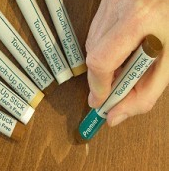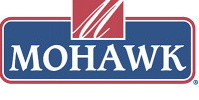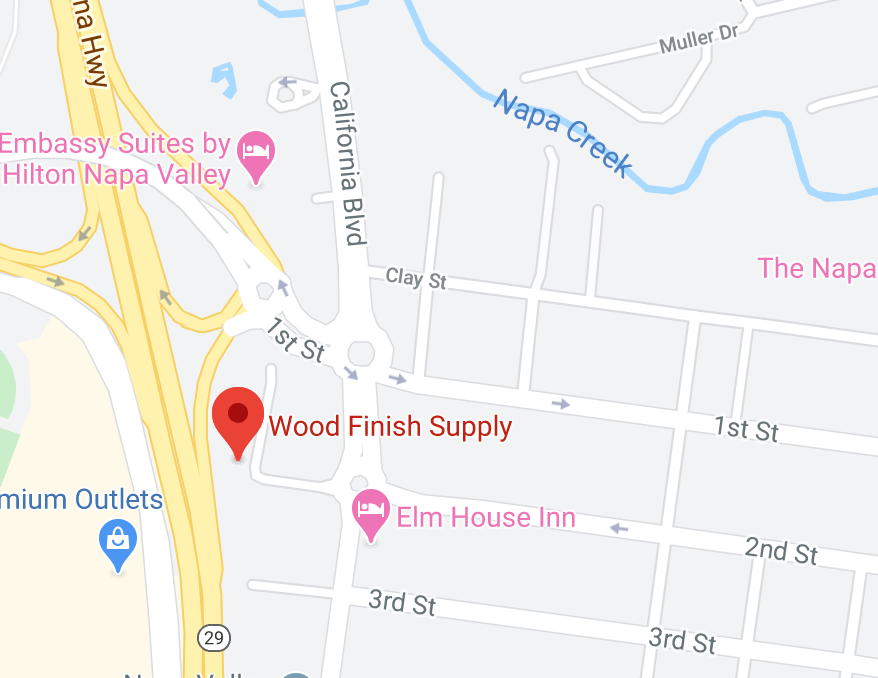Premier Touch-Up Materials on Sale

Stock Up for future projects. — Sale Limited to stock on hand
Click to: See the Premier On Sale List

Premier Touch-Up Materials on Sale

Stock Up for future projects. — Sale Limited to stock on hand
Click to: See the Premier On Sale List
 Shellac.net Wood Finish Supply & MERIT Industries
Shellac.net Wood Finish Supply & MERIT Industries
Mohawkfinishsupply.com
Authorized Mohawk Distributor
2465 Second Street, Napa CA 94559
New Hours Monday – Thursday 9:00 am to 4:00 pm
Saturdays – by Appointment.
707-299-8016
Please stop by our NEW Showroom when you’re in the Napa area.

Location Access:
from Hwy 29: take the First Street exit
at the Roundabout, RIGHT on California (One block) to 2465 Second
From Downtown Napa:
take 2nd St. west, one block past California to 2465
See: Shellac.net Variety Listing
To: MOHAWK, H.BEHLEN & Select Finishing Materials
To: MERIT Industries products index
All Milk Paint on Sale
Stores well, Unlimited shelf life,
Stock Up for future projects.
HUGE DISCOUNTS
Click Here: for the entire list here
Sale limited to the stock on hand
|
Shellac Solvent: Shellac is a wonderful finish with a fantastic First, there is no industry regulation Second, is that there is no way of knowing |
In short, denatured alcohol is an Prior to Prohibition here in the United Note: Everclear 190 is not available in all states. |
| ‘Everclear 190’ is a 190 proof Ethanol. Everclear 190 Grain Alcohol is currently banned in 14 states that have ruled 190 Proof Everclear Is Not Legal (2023) include: California – only 151 proof available = 75.5% alcohol & 24.95% water District of Columbia Florida Hawaii Iowa Maine Maryland Massachusetts Michigan Minnesota Nevada New Hampshire New York North Carolina Ohio Pennsylvania Virginia Washington Everclear, (less than 190 Proof) available in the states above IS NOT Recommend for use as a solvent for shellac. 190 Everclear is a brand name of rectified spirit (also known as grain alcohol and neutral spirit) produced by the American company Luxco (formerly known as the David Sherman Corporation). It is made from grain and is bottled at 60%, 75.5%, 94.5% and 95% alcohol by volume (120,151, 189, and 190 U.S. proof respectively). |
Everclear 190 proof (5% distilled Water) A good Solvent for making Shellac is legal in 36 states. States where ‘Everclear 190’ Is Legal (as of 2023) Alabama Alaska Arizona Arkansas Colorado Connecticut Delaware Georgia Idaho Illinois Indiana Kansas Kentucky Louisiana Mississippi Missouri Montana Nebraska New Jersey New Mexico North Dakota Oklahoma Oregon Rhode Island South Carolina South Dakota Tennessee Texas Utah Vermont West Virginia Wisconsin Wyoming |
French Polishing is the name given to the process of coating wood with a solution of shellac dissolved in alcohol, using a “rubber” made of rag and cotton wool instead of with a brush. The alcohol evaporates, leaving the shellac deposited upon the wood.
When applied correctly it produces what is possibly the finest looking finish for furniture. Shellac was first introduced into Europe about the 16th Century, but the term FRENCH POLISH was not used until about 1820, when the process was developed by a French cabinet maker.
The 4-page PDF — ‘Guide to French Polishing‘
Shellac’s Great Properties
From The:
Zinsser booklet revised 2004, first published in 1913
and reprinted seventeen times throughout the years.
Shellac has such remarkable properties that if it were just recently discovered, it would be hailed as the miracle finish of the 21st century.
Shellac is an all-natural resin that is harvested regularly
and is, therefore, a renewable resource.
Shellac is dissolved in denatured ethyl alcohol. It has a mild,
antiseptic odor that dissipates quickly as the product dries.
Shellac is user-friendly and virtually goof-proof.
It can be applied with a brush, pad, sprayer or wiping cloth.
Shellac dries to the touch in MINUTES and, in most cases,
can be sanded or recoated in little more than half an hour.
Unlike other finishes, shellac can be applied in cold temperatures
(40° F. and below) without concern over proper drying and curing.
The U.S. Food & Drug Administration has certified shellac
as a protective glaze for candy and pharmaceuticals.
Shellac is UV-resistant and will not yellow
or darken with age, unlike oil-base finishes.
Shellac brings out the rich warmth of wood grain.
Finished surfaces look soft and natural, not plastic-coated.
Shellac is prized by everyone who uses it for its incredible adhesion.
It will stick to just about anything.
Two or more coats of shellac will seal in any kind of odor
in any type of porous surface.
Shellac is one of the world’s most effective stain and knot sealers,
another reason why we use it to make B-I-N® Primer-Sealer.
Unlike other finishes, shellac can be easily touched up if it is scratched or worn; a new coat of shellac melts itself into the existing coat.
Shellac is dissolved by household ammonia as well as alcohol,
making it very easy to clean brushes and other tools.
&
Best of all, a shellac finish looks great!
Shellac imparts a clear, hard film with a high gloss
that can be buffed to a glowing, velvety sheen.
Shellac in liquid and aerosol form is still the craftsman’s choice
as a finish for woodwork and as a protective sealer for countless uses.
Shellac.net Wood Finish Supply • MeritIndustries.com
Authorized Mohawk Distributor